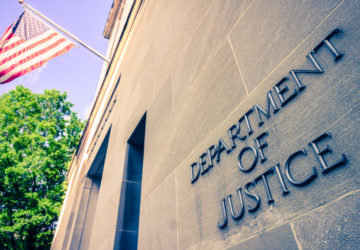1) The Humane Society of the United States (HSUS) is a “humane society” in name only. It isn’t affiliated with any hands-on “humane society” organizations, and it doesn’t operate a single pet shelter or pet adoption facility anywhere. During 2008, HSUS contributed barely $450,000— less than one-half of one percent of its budget—in grants to dog and cat shelters. By comparison, that same year it gave $2.25 million to a political campaign committee behind an anti-meat ballot initiative in California, and put $2.5 million into HSUS’s executive pension plan. HSUS is the wealthiest animal-rights lobbying organization on earth. It agitates for the same goals as PETA and other radical groups, but uses fewer naked interns.
2) Beginning on the day of NFL quarterback Michael Vick’s 2007 dogfighting indictment, HSUS raised money online with the false promise that it would “care for the dogs seized in the Michael Vick case.” The New York Times later reported that HSUS wasn’t caring for Vick’s dogs at all. And HSUS President Wayne Pacelle told the Times that his group urged government officials to “put down” (that is, kill) the dogs rather than adopt them out to suitable homes. HSUS later quietly altered its Internet fundraising pitch. Vick now gives HSUS “sponsored” speeches. And most of his dogs have been rehabilitated—without any help from HSUS.
3) HSUS’s senior management includes a former spokesman for the Animal Liberation Front (ALF), a criminal group designated as “terrorists” by the FBI. HSUS president Wayne Pacelle hired John “J.P.” Goodwin in 1997, the same year Goodwin described himself as “spokesperson for the ALF” while he fielded media calls in the wake of an ALF arson attack at a California veal processing plant. In 1997, when asked by reporters for a reaction to an ALF arson fire at a farmer’s feed co-op in Utah (which nearly killed a family sleeping on the premises), Goodwin replied, “We’re ecstatic.” That same year, Goodwin was arrested at a UC Davis protest celebrating the 10-year anniversary of an ALF arson at the university that caused $5 million in damage.
4) A 2008 Los Angeles Times investigation found that HSUS receives less than 12 percent of the money raised on its behalf by California telemarketers. Professional fundraisers keep the rest. If you exclude two campaigns run for HSUS by the “Builda-Bear Workshop” retail chain—which consisted of the sale of surplus stuffed animals (not really “fundraising”)—HSUS’s yield shrinks to just three percent. This is typical. In 2004, HSUS ran a telemarketing campaign in Connecticut with fundraisers who promised a return of “zero percent” of the proceeds. The campaign raised over $1.4 million. Not only did none of that money go to HSUS, but the group paid $175,000 for the telemarketing work. Similar filings exist in Massachusetts, New York, and other states. In 2008 HSUS collected more than $86 million in contributions, but spent more than $24 million on fundraising.
5) HSUS’s heavily promoted U.S. “boycott” of Canadian seafood—announced in 2005 as a protest against Canada’s annual seal hunt—is a phony exercise in media manipulation. A 2006 investigation found that 78 percent of the restaurants and seafood distributors described by HSUS as “boycotters” weren’t participating at all. Nearly two-thirds of them told surveyors they were completely unaware HSUS was using their names in connection with an international boycott campaign. Canada’s federal government is on record about this deception, saying: “Some animal rights groups have been misleading the public for years … it’s no surprise at all that the richest of them would mislead the public with a phony seafood boycott.” A documentary director also caught an HSUS film crew abusing a dying seal while they shot a 2007 fundraising video on the ice floes of Atlantic Canada.
6) HSUS raised $34 million in the wake of Hurricane Katrina, supposedly to help reunite lost pets with their owners. But comparatively little of that money was spent for its intended purpose. Louisiana’s Attorney General shuttered his 18-month-long investigation into where most of these millions went, shortly after HSUS announced its plan to contribute $600,000 toward the construction of an animal shelter on the grounds of a state prison. In 2009, Atlanta ABC affiliate WSB-TV reported that public disclosures of the disposition of the $34 million in Katrina-related donations added up to less than $7 million.
7) After gathering undercover video footage of improper animal handling at a Chino, CA slaughterhouse during November of 2007, HSUS sat on its video evidence for three months, even refusing to share it with the U.S. Department of Agriculture. HSUS’s Dr. Michael Greger may have perjured himself before Congress, testifying that the San Bernardino County (CA) District Attorney’s office asked the group “to hold on to the information while they completed their investigation.” The District Attorney’s office quickly denied that account, declaring that HSUS refused to make its undercover spy available to investigators if the USDA were present. Ultimately, HSUS chose to release its video footage at a politically opportune time, as it prepared to launch a livestock-related ballot campaign in California. Meanwhile, meat from the slaughterhouse continued to flow into the U.S. food supply for months.




